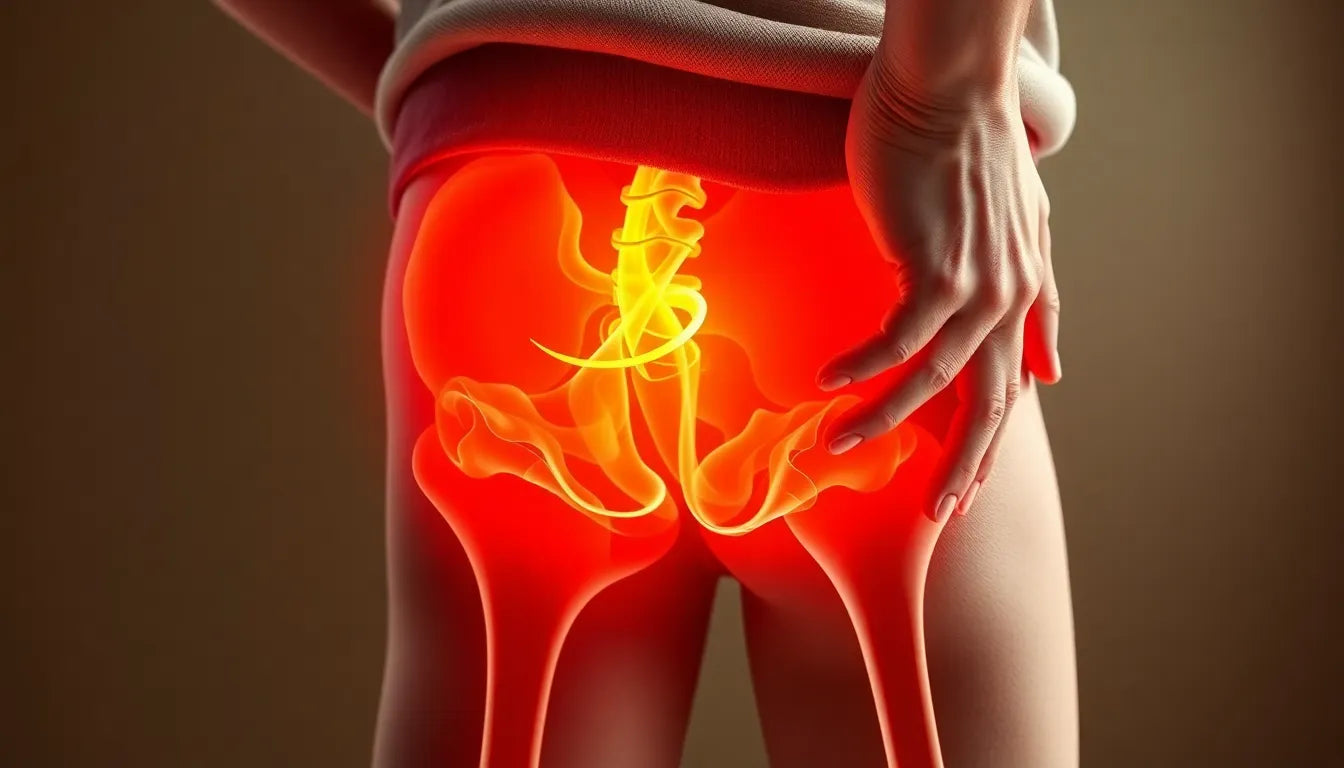Persistent pain after hip surgery is a significant concern for many individuals who have undergone total hip replacement (THR). While the primary goal of this surgery is to alleviate pain and restore mobility, some patients find themselves grappling with ongoing discomfort long after the procedure. This unexpected outcome can take an emotional and physical toll, as patients anticipate relief but continue to experience pain.
Recent studies highlight the prevalence of this issue, with approximately 14% of patients reporting persistent pain 6 to 12 months following their surgery. Some estimates suggest even higher rates, indicating that this is not an uncommon experience. Understanding the factors contributing to persistent pain after hip surgery is crucial for both patients and healthcare providers, as it can significantly impact recovery and quality of life.
Understanding persistent pain after hip surgery
Persistent pain after hip surgery is more than just a physical ailment; it can affect a patient's mental well-being and overall outlook on life. The anticipation of relief followed by continued pain can be disheartening, leading to feelings of frustration and helplessness. For healthcare providers, understanding the prevalence, characteristics, and risk factors associated with persistent pain is vital in developing effective management strategies. This knowledge helps in setting realistic expectations and providing comprehensive care to those affected.
By acknowledging the complexities of persistent pain, both patients and healthcare professionals can work together to improve outcomes. This involves exploring new avenues for pain management and rehabilitation, ensuring that patients receive the support they need to navigate their recovery journey. With the increasing number of hip surgeries performed worldwide, addressing persistent pain is more important than ever.
The need for improved management strategies
The journey to recovery after hip surgery should not be marred by persistent pain. As awareness of this issue grows, so does the need for improved management strategies. Tailored treatment plans that address individual needs and circumstances are essential in helping patients achieve better outcomes. This may include a combination of rehabilitation, pain management programs, and ergonomic aids designed to alleviate symptoms and enhance quality of life.

Women's Posture Shirt™ - Black
Activates muscles for better posture and helps relieve pain and tension. CE registered and suitable for daily use.
As research continues to shed light on persistent pain after hip surgery, it is crucial for both patients and healthcare providers to stay informed. By understanding the potential challenges and exploring innovative solutions, there is hope for a more comfortable and fulfilling recovery process. Ultimately, finding relief from persistent pain requires a collaborative approach, with patients and healthcare providers working together to overcome this common yet challenging issue.
Prevalence and characteristics of persistent pain after hip surgery
Persistent pain following hip surgery is a multifaceted issue that continues to affect a significant portion of patients. According to a 2024 systematic review and meta-analysis, approximately 14% of patients report persistent pain 6 to 12 months after total hip replacement (THR). This statistic highlights the need for awareness and proactive management strategies. Moreover, older studies have suggested that up to 27% of patients may experience some degree of persistent pain even 3 to 4 years post-surgery, although severe or neuropathic pain remains relatively rare.
Understanding the nature of this pain is crucial, as most patients describe it as mild to moderate, with common descriptors including aching, tenderness, and fatigue. These characteristics can vary widely among individuals, impacting their daily activities and overall quality of life. Acknowledging these variations is essential for tailoring treatment plans to meet individual needs effectively.
Severity and descriptors of post-surgical pain
To better understand the impact of persistent pain, it is useful to differentiate between mild, moderate, and severe pain levels. Mild pain often involves minor discomfort that can be managed with over-the-counter medications and lifestyle adjustments. Moderate pain may require more comprehensive pain management strategies, including physical therapy and prescription medications. Severe pain, although less common, can significantly impair mobility and necessitate specialized interventions.
| Pain Severity | Description | Percentage of Patients |
|---|---|---|
| Mild | Minor discomfort, manageable with basic interventions | Majority of patients |
| Moderate | Noticeable pain that affects daily activities, requires focused management | Significant portion |
| Severe | Intense pain, potentially debilitating, requires specialized care | Rare |
Risk factors contributing to persistent pain
Identifying risk factors is a critical step in preventing and managing persistent pain after hip surgery. Patients with multiple pain conditions or a history of major depression are significantly more likely to experience ongoing discomfort post-surgery. These factors can exacerbate postoperative pain and hinder recovery, emphasizing the importance of a comprehensive preoperative assessment and personalized care plans.
Furthermore, understanding these risk factors allows healthcare providers to implement early interventions, potentially mitigating the severity of persistent pain and improving patient outcomes. This proactive approach is vital in addressing the complex interplay of physical and psychological elements that contribute to chronic pain.
Impact on patients and their recovery
Despite the challenges posed by persistent pain, it is important to note that most patients report improved symptoms compared to their preoperative status. This improvement underscores the effectiveness of hip replacement surgery in alleviating pain and enhancing mobility, even when some level of discomfort persists.
However, the clinical significance of chronic pain after THR cannot be overlooked, especially as the number of hip surgeries continues to rise globally. Persistent pain can affect a patient's mental health, social interactions, and overall quality of life, making it a critical area for ongoing research and innovation in pain management strategies.
By understanding the prevalence, characteristics, and risk factors associated with persistent pain after hip surgery, patients and healthcare providers can work together to develop effective strategies for managing this common yet challenging issue. Through a combination of medical interventions, lifestyle modifications, and supportive care, there is hope for a more comfortable and fulfilling recovery journey.
Current management strategies for persistent pain after hip surgery
Managing persistent pain after hip surgery requires a multifaceted approach that is tailored to each patient's unique needs. Current strategies emphasize the importance of rehabilitation programs, which often include physical therapy to improve mobility and strengthen the surrounding muscles. Pain management programs, including medications and alternative therapies such as acupuncture or massage, can also play a critical role in alleviating discomfort.
In addition, ergonomic aids are increasingly recognized as valuable tools in managing persistent pain. These aids, such as specially designed cushions or supportive footwear, can help reduce strain on the hip joint and improve overall comfort during daily activities. By incorporating these strategies into a comprehensive treatment plan, patients can experience a more effective recovery and enhanced quality of life.

Lumbar support belt
Provides adjustable lower back support for pain relief and stabilization—ideal during recovery and daily use.
Future directions and research in persistent pain management
The landscape of persistent pain management is continually evolving, with ongoing research aimed at identifying more effective strategies. New clinical studies are focusing on understanding the underlying mechanisms of persistent pain post-total hip arthroplasty (THA) and exploring innovative interventions. These studies are crucial in providing both patients and clinicians with data-driven insights into effective management techniques.
As the body of research grows, there is hope for the development of more personalized pain management plans that consider individual risk factors and preferences. This patient-centered approach is essential in addressing the complex nature of persistent pain and improving overall outcomes for those affected.
frequently asked questions
What percentage of patients experience persistent pain after hip surgery?
Approximately 14% of patients report experiencing persistent pain 6 to 12 months after hip surgery. However, estimates can vary depending on study methodologies and patient populations.
What are the common characteristics of persistent pain after hip surgery?
Persistent pain is often described as aching, tender, and causing fatigue. Most cases are mild to moderate in severity, with severe or neuropathic pain being rare.
Are there specific risk factors for developing persistent pain post-surgery?
Yes, patients with multiple pain conditions or a history of major depression are at a higher risk of developing persistent pain after surgery. These factors can exacerbate postoperative pain and affect recovery.
How can persistent pain after hip surgery be managed?
Management strategies include rehabilitation programs, pain management medications, and ergonomic aids. Treatment plans should be tailored to individual patient needs to effectively alleviate symptoms.
When should patients seek further evaluation for persistent pain?
Patients should consult their healthcare provider if pain persists beyond the typical recovery period or significantly impacts their quality of life. Early intervention can help address underlying issues and improve outcomes.
Källor
- Beswick, A. D., Wylde, V., Gooberman-Hill, R., Blom, A., & Dieppe, P. (2012). "What proportion of patients report long-term pain after total hip or knee replacement for osteoarthritis? A systematic review of prospective studies in unselected patients." BMJ Open.
- Hauser, R. (n.d.). "Causes of Long-Term Pain After Hip Replacement." Caring Medical.
- Hawaii Joint Replacement Institute. (n.d.). "Painful Hip Replacement." Hawaii Joint Replacement Institute.
- Wylde, V., Blom, A. W., Whitehouse, S. L., Taylor, A. H., & Pattison, G. T. (2017). "Patient-reported outcomes after total hip and knee arthroplasty in a national joint registry: comparison of patients with and without chronic post-surgical pain." BMJ Open.
- American Hip Institute. (n.d.). "How to Relieve Pain After Hip Surgery." American Hip Institute.
- Medical News Today. (n.d.). "Femoral Stem Pain After Hip Replacement: What to Know." Medical News Today.
- Mayo Clinic. (2019). "Mayo Clinic Q and A: Pain Near Artificial Hip Should be Evaluated Without Delay." Mayo Clinic News Network.


















